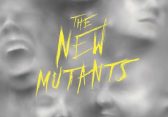Stephen King has (or had; I’m not sure if it’s still ‘a thing’) a policy when it comes to the film rights of his short stories. He sells them for a dollar, and if he likes the end result, he keeps them for his personal collection. Published in 1982’s Different Seasons (along with Apt Pupil and The Body, AKA Stand By Me), Rita Hayworth and The Shawshank Redemption is surprisingly only 94 pages long, which qualified it to be sold for a mere 100 cents. A filmmaker by the name of Frank Darabont bought the rights in 1987, and originally was approached by director Rob Reiner, who had helmed the big screen adaptation of Stand By Me. Interestingly, Reiner had a wholly different idea as to who he’d cast as the leads: Tom Cruise and Harrison Ford. Darabont (fortunately) turned down his $2.5 million offer though, as he saw it as his chance to “do something really great”. As time has told, he did more than that: he’s gifted the world with one of the most moving and emotional motion pictures in cinematic history.
The film explores far too many sub plots to summarise here, so I’ll just outline the basic plot: starting out in 1947, The Shawshank Redemption is the story of Andy Dufresne (Tim Robbins) and his time in the Shawshank State Penitentiary after he is convicted of murdering his wife and her lover, based on circumstantial evidence. Whilst inside, he befriends Ellis “Red” Redding (Morgan Freeman), and the film follows the events that occur and the people that cross their paths during their sentences.
As I said, The Shawshank Redemption has a large number of subplots but it would spoil the enjoyment of those who haven’t seen it to reveal them all here. However, stand out narratives include a prisoner named Brooks, and how he comes to terms with living on the outside after being incarcerated for 50 years. Also, the story of how Andy puts his banking skills from the outside to ‘good’ use inside, by helping the psychotic yet cowardly warden with his dirty work. Honestly, this film is just stories within stories, and seeing them all come together is a thing of beauty. None of them are rushed either; 20 years of Andy’s time inside are chronicled, and Darabont wants us to not just see them go by, but feel them too. The scenes are deliberately slow paced, yet not one moment of film is wasted. And because so much time is spent on the scenes, we can easily emotionally identify with them. This though is also down to the phenomenal effort that they give to the role; not just Robbins and Freeman but absolutely everyone visible on screen at any given time, with no exceptions. Each one of them are warm characters, with rich personalities: it’s easy to forget that these are convicted criminals. But then again, they’re “all innocent in Shawshank”.
The prison itself is a foreboding gothic stucture that is both terrifying and wonderful. The external scenes were shot at the genuine (but unused) Mansfield State Reformatory in Ohio, whilst internal scenes were shot on purpose built soundstages, as it worked out cheaper to do that than try and repair the Mansfield. From the opening aerial shots of the prison yard, there’s no denying that the facility is imposing. Now, it’s open for ghost walks and tours; there’s some insanely creepy photos from the inside of the building at this site.
I literally have nothing bad to say about The Shawshank Redemption. Few films, for me, could be classed as ‘perfect’. This is one of them. It’s not been an easy road for the film to obtain such a high status though: with a budget of $25 million, it made less than $1 million dollars in its opening weekend. It was nominated for seven Oscars in 1995, including Best Film (the award went to Forrest Gump) and it didn’t win any. However, its fortunes turned when it was released on VHS (y’know, the format that came before DVD), as it became the highest rented film of 1995. Nowadays, it frequently ranks highly on “Top 10” lists, even being top of IMDb’s (the number one film site on the internet) list of top 250 movies of all time. It’s an accolade that it fully deserves, and I believe it will never lose its appeal.



























